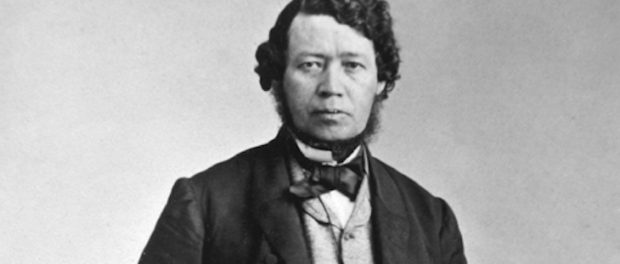1868: D’Arcy McGee & Other Quebec Curios
Part of “The Road to Canada”, 1864-1899
 Thomas D'Arcy McGee, photographed in 1868 by William Norman. Credit: Library and Archives Canada/C-016749/MIKAN 3577156
Thomas D'Arcy McGee, photographed in 1868 by William Norman. Credit: Library and Archives Canada/C-016749/MIKAN 3577156
How did an Irishman become one of the Fathers of Confederation? The story begins, oddly enough, with a young man living in the United States. Thomas D’Arcy McGee originally immigrated to the United States during the wave of immigration in the 1840s. Settling down in Massachusetts, he wrote pieces with a nationalist slant for newspapers destined for the Irish diaspora that had also settled in the area. Raised from an early age with stories of Irish culture from his parents, his identity was shaped in identifying with the Irish which developed into a form of nationalism. Initially advocating an annexation of Canada to the United States, after the rise of anti-immigration sentiments within the United States in the late 1840s, he fled to Canada East, proclaiming it to be more tolerant than his former home. Settling in Montréal in 1857, he was elected as a deputy in the Legislative Assembly the very same year.
It was the very concept of nationalism that drew McGee to the idea of Confederation. Very shortly after he arrived in the Province of Canada, he subscribed to the idea and advocated it through his newspaper, the New Era, tying in the idea of a confederation that held immigration as one of its pillars of stability and the building of railroads as a way to connect the country and create economic growth. Seeing the French Canadians as the Irish of English Canada, he sought to apply many of his Irish nationalist ideas to French Canada in order to help them preserve their culture, both linguistic and religious, the latter of which was shared by many of his Irish allies. McGee also advocated for the right for Catholics to be educated about their religion in their own schools in Canada West, where most others were Protestants. McGee was an active participant in the Charlottetown and Quebec conferences that ironed out the articles that would eventually become the British North America Act.
His nationalist ideas were not as radical as some, and ultimately it might have been McGee’s more moderate ideals that led to his murder. McGee’s ideals of pacifist nationalist clashed with those of the Fenians, a radical Irish nationalist group that believed in violence as the means for Irish independence. In April 1868, McGee was murdered early in the morning as he returned from a Parliamentary debate. His untimely and violent death sent shock waves through the community, with eighty thousand people out of about one hundred and twenty thousand in Montréal attending the statesman’s funeral. John A. Macdonald, the Prime Minister of the newly-created Dominion of Canada, immediately took a personal interest in seeing McGee’s murderer brought to trial. The man charged with McGee’s assassination was an Irish tailor, Patrick James Whelan, and newspapers of the day tended to emphasise the fact that Whelan may have been involved with the Fenian movement. It was, however, a gun owned by Whelan that fired the fatal shot, yet it was the burden for the lawyers trying Whelan to prove that Whelan was the man that pulled the trigger.
Whelan was tried for murder, with John A. Macdonald seated in the courtroom during the trial. While evidence that Whelan was ultimately the person who shot McGee remains dubious at best, a jury nonetheless convicted him for D’Arcy McGee’s murder. Executed in February of 1869, Whelan professed his innocence to the very end but also stated that he knew who was responsible for McGee’s death. His execution was the country’s last public hanging.





